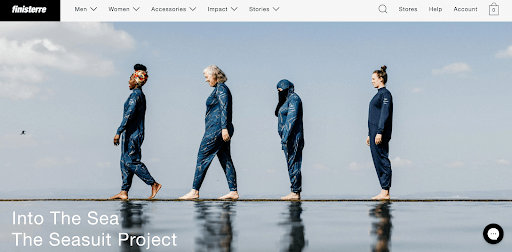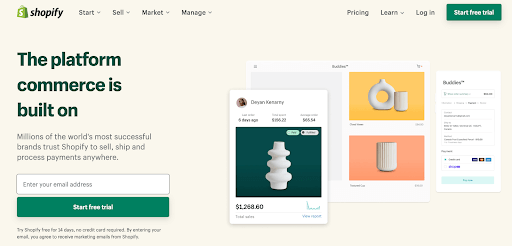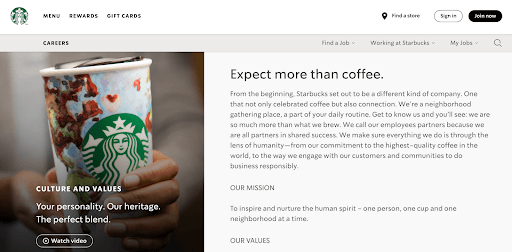SEO Tips for E-commerce: Improve Your Online Shop's Ranking in Google
SEO is an important tool for e-commerce businesses to bring in new customers. Here are the best tips for your online shop to rank higher in Google.

Businesses need to do whatever it takes to stand out from the competition to win more customers. And having a USP is one of the best ways to showcase what it is that you do for your audience—and especially what it is that you do differently.
A USP (Unique Selling Point) drives home the value of what you’re offering to people, displaying not simply a product you sell that others don’t, but a benefit you offer that no one else in your niche is offering.
In this article, we’ll be defining exactly what a USP is and how it will benefit your company. We’ll also show you a number of examples of existing USPs so that you can get a better idea of what you need to do next.
If you’ve got a new business, it’s important that you create a USP.
Similarly, if you’re an existing business that’s been around for a few years now but you don’t have a USP, it’s time to get one.
This is because a USP can be the key differentiator between you and a rival brand, and new companies in particular must do all that they can to enter the marketplace and entice customers away from established brands.
Imagine two companies are both selling the exact same product at he exact same price. How would a customer decide which of the two to buy from?
It’s likely they’ll go with the company that’s got a USP, such as world-class customer service that sets them apart and positions them as the top-rated seller.
A USP goes a long way towards defining your uniqueness in the marketplace. In other words, what you do differently. You might sell a product that other companies are selling, but you’ve got a specific benefit that draws customers in.
Recommended reading:
How to Differentiate Your Shop from Competitors Selling the Same Products
Not only is having a USP important, but showcasing your USP is equally as important. This is where your sales and marketing team need to work together to drive home your USP so that it’s clearly communicated to your audience. You can use sales pitches, ads and other kinds of promotional materials to establish your unique position in the market, and you could consider using a kanban project management tool to help.
Yes.
A business can still exist and do relatively well without a USP, but it’s still essential that you at least know your target audience and have a clear candidate—whether that be discounted men’s leather jackets or consciously built products.
Finisterre is an example of a company that doesn’t have a USP—but simply states the name of its project.

By having a USP—they and many other businesses could take their sales to the next level.
What’s more, if you’re operating in a crowded niche and need something to set you apart from everyone else, having a USP can prove highly beneficial.
Recommended reading:
9 Ways to Differentiate Yourself From Your Competition
We’ll take a look at a few examples of USPs in a moment, but first, let’s consider how you might craft your own.
The first thing you need to look at is your product or service, and what problems it solves. Who are your customers? What are their biggest pain points?
Then, consider what’s unique about your product or service. This doesn’t have to relate to the product itself (although it can), but it can also relate to the extra lengths you go to in order to create an excellent customer experience.
For instance, a USP could be a specific material you use. It could be the fact that your products are all handmade, whereas your rivals’ products aren’t.
But it might be that you offer free shipping, excellent customer support or bulk discounts.
Essentially, you have to do something that goes above and beyond what your competitors are doing.

Shutterstock/M.Aka
A smart idea is to carry out thorough research of your customers to learn more about them. This can then help you position your brand in a unique way that really appeals to them because you’ll be able to find pain points that you or your competitors haven’t yet uncovered. Once you find these, you can then build a message around them that helps your brand stand out.
It also might be the case that your company already has a specific strength that you haven’t yet fully tapped into, or capitalised on in your marketing strategies.
Lastly, take a closer look at your competition. What are they doing—and what can you do differently for them? What are their strengths? What weaknesses do they have? Is there something they’re missing that you can take advantage of?
You need to have something that your competitors don’t have, but it also needs to be something that your customers will appreciate.

Shutterstock/megaflopp
Crafting a USP isn’t easy and it will take some time. It might be the case that you create a unique selling point before starting all over again.
That’s fine. Take the time you need to create a USP that attracts customers, positions you as the market leader, and demonstrates the value you’re offering that no one else is.
If you’re stuck for a few ideas, this section will explore a few examples of existing USPs.
M&M’s is a chocolate candy produced by Mars. They’re small chocolate “buttons” in a pack that people dip into with their hands and eat.
M&M’s found a pain point that their customers had when eating snacks like this—the chocolate would melt in people's hands.
So, M&M’s set to work producing chocolate that wouldn’t melt in our hands.
The slogan they came up with was “The milk chocolate that melts in your mouth, not in your hand.”

The slogan promotes a huge benefit to M&M's customers. After all, nobody wants to keep eating small chocolate buttons that continually melt in their hands. Instead, people want to cleanly eat their chocolate and then return to whatever it was they were doing.
By driving home this benefit, M&M’s was able to create a USP.
Speaking of online marketplaces, Amazon isn’t the only company that lets anyone sell online without having to create an e-commerce store from scratch first.
Shopify kind of allows this too. The difference is that on Amazon, sellers can literally sell their products without the need to create a store at all, whereas on Shopify, sellers can easily create an online store without any prior experience in designing or coding.
In fact, one of their slogans is “the platform commerce is built on.”

The idea is that online merchants have everything they need at their fingertips in one place.
Their slogan (which encapsulates their USP, as all good slogans should) draws attention to the fact that sellers don’t need to go anywhere else for anything at all. It’s right here!
With so many coffee shop chains around, it’s not easy for a coffee shop to distinguish itself from the crowd.
And yet by creating the USP “expect more than coffee”, Starbucks has managed to do exactly that.

What does “expect more than coffee” mean?
It creates expectations in a customer’s mind that they can expect to pop into any Starbucks for excellent customer service, friendly conversation, tasty food, and good times.
The meaning we can infer is that Starbucks doesn’t want to merely engage people in a cold and impersonal customer transaction—instead, they want to make a proper human connection with their customers.
Starbucks also makes a commitment to give back to communities, thereby positioning itself as a sustainable brand.
Whether you offer a better price than your competitors, better customer support or a mobile app, a USP can give you the edge that persuades customers to buy from you. Differentiation is key, with 83% of customers claiming that the customer experience is just as important as the product.
The challenge now is in coming up with a strong USP that not only defines your brand’s uniqueness, but which also positions you as offering something better than everyone else - and which you know you can make good on.
Naturally, as well as having a USP, it’s equally important that you continue offering outstanding service to your customers alongside a strong product.
04/05/22SEO is an important tool for e-commerce businesses to bring in new customers. Here are the best tips for your online shop to rank higher in Google.
Valentine's Day has grown in popularity across Europe. We're sharing some romantic statistics (redundant, right?) and look at 9 marketing tips for V-day.